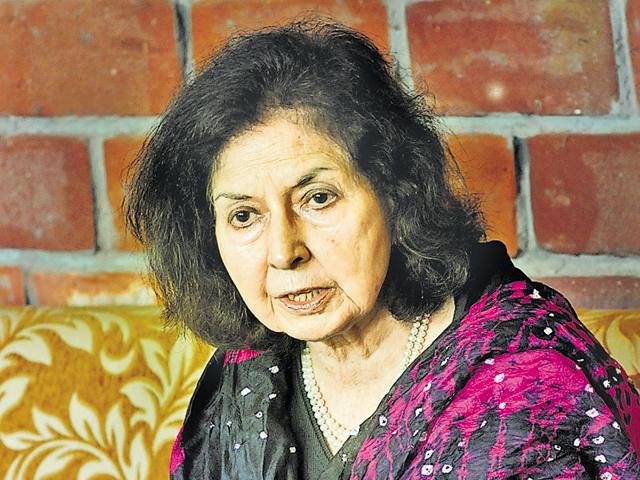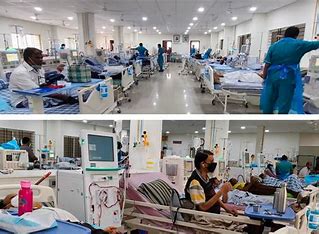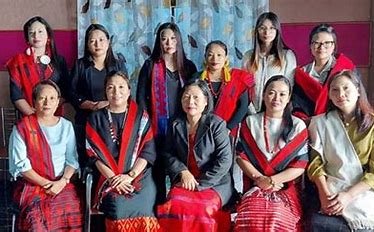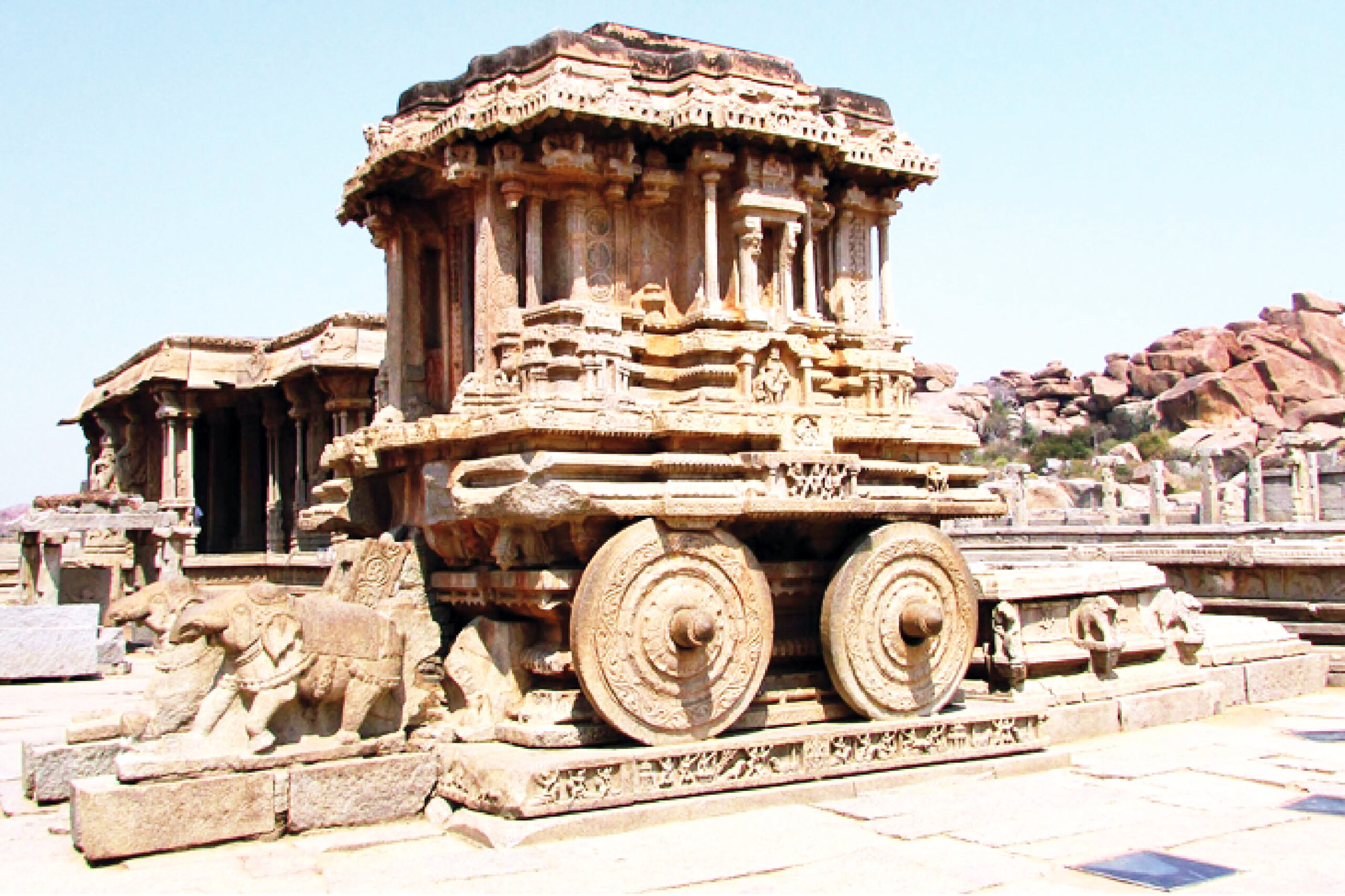
This Tuesday marks the the 49th year of Emergency, imposed by Indira Gandhi. In this two-part series of Rasheed Kidwai gives a vivid account of key characters who were part of Indira-Sanjay team.
Writer Nayantara Sahgal, Sanjay Gandhi’s aunt, had many skirmishes with the Indira Gandhi establishment. She suddenly discovered that many newspaper editors were avoiding her. Publishers politely declined to publish her work and a filmmaker who was keen to make a film based on her novel, This Time of Morning, vanished into thin air. The filmmaker, who lived abroad, felt that her association with Nayantara would risk her credibility with the ruling clique and spoil her chances of getting direct sanction for television programmes from the information and broadcasting
ministry.
Nayantara, whose mother Vijaya Lakshmi had never got along too well with Indira, was an outspoken critic of the Emergency. In December 1975, Nayantara wrote pamphlets against the Indira regime, liberally strewn with anti-fascism quotes from Nehru. Her mother and friends advised her to avoid writing on politics, but Nayantara could not reconcile herself to the ban on creativity. In an article, she focused on the right to dissent, recalling how atrocious punishments had always been dealt out to those who had disobeyed authority.
‘I recalled that one could be sentenced to death by poison for teaching the values of the good life, if these were different from what the state taught. One could be burned at the stake, broken on the wheel or condemned to the galleys for declaring, writing or printing “heresies” against the church or the monarch or challenging current theories about the sun, the earth and the stars. From Socrates to Servetus and beyond, prison, torture or extermination had been ordinary matter of fact punishments for those who disagreed.’ (Sahgal, Nayantara, A Voice for Freedom, Hind Pocket Books, Delhi, 1977.)
During the Emergency, Nayantara was particularly alarmed by the growing horror of gulags in India, the seemingly real possibility of unnamed, unnumbered, unreported and undefended arrests. By one estimate, the nineteen-month-long Emergency saw more than a 100,000 political activists of all hues behind bars for long periods.
When journalist Kuldip Nayar was arrested, both Indira and Sanjay earned adverse publicity at home and abroad.
Nayantara claimed that her telephone was being tapped and her movements closely monitored. While the actual situation was far less severe than the Soviet forced labour and concentration camp system vividly described in Solzhenitsyn’s The Gulag Archipelago, for writers and journalists, earning a living during the Emergency was indeed a problem.
Nayantara had finished writing A Situation in New Delhi, but before it could be published, she was asked to see the chief censor, Harry D’Penha, who advised her to seek the home ministry’s approval. Nayantara declined to see Om Mehta.
‘I took my manuscript home and forgot about it. It had no importance now next to the sheer sickness I felt when I thought of admired, veteran leaders, some legendary for their contribution to India, in jail, of the thousands with no famous name or background to protect them.’ (Sahgal, Nayantara, A Voice for Freedom, Hind Pocket Books, New Delhi, 1977.)
Nayantara was not arrested during the Emergency, but on one occasion, her sister was allegedly told by a close Indira associate and the then West Bengal chief minister, Siddhartha Shankar Ray that she could be ‘picked up under MISA’ at any time.
MISA, or the Maintenance of Internal Security Act, was dreaded by everyone during the Emergency. Former Union railway minister Laloo Prasad Yadav, who had a daughter during that period, named her Misa Bharti after that draconian law.
On another occasion, V.C. Shukla, another key member of Indira’s ‘kitchen cabinet’, told Vijaya Lakshmi Pandit with an ill-concealed sense of satisfaction that Nayantara would not be able to write about politics. Nehru’s sister quickly retorted that politics was not the lone subject on which Nayantara was capable of writing.
By the time the Emergency ended, Nayantara was so disillusioned with the Congress and her close relatives that she found the maverick Subramanian Swamy and his rightwing Jan Sangh a worthy alternative. She told Swamy at a gathering, ‘People need to know that the Jan Sangh does not have three horns and a tail.’
B.N. Tandon, who served in the prime minister’s office during the Emergency, wrote a Samuel Pepys-type account of it, called PMO Diary II: The Emergency. On 28 May 1976, Tandon has an entry stating.
‘Gopal gave another instance of how the PM can stoop to any level to achieve her political aims. The only family member left of Kamaraj is his aged sister, who is a very poor lady. Malaviyaji had thought that to help her, she could be given an LPG agency. The PM stopped this. The reason is that Kamaraj’s sister is still with the Congress (Old) and shows no sign of wanting to defect to Indira’s Congress. At any rate, the PM will not easily reconsider this case.’ (Tandon, B.N., PMO Diary, Konark Publishers Pvt. Ltd., New Delhi, 2006.)
There were other bizarre events in the Sanjay saga of the Emergency. In Connaught Place in New Delhi, there is a textile shop called Pandit Brothers, whose eighty-year-old owner was the uncle of P.N. Haksar, Indira’s former principal secretary. It is believed that Haksar had suggested to Indira that she dissociate herself from Sanjay’s activities.
It may have been just a coincidence, but during the Emergency, Haksar’s uncle had to spend a day in police custody.
The reason? Apparently, the towels and napkins at his shop did not carry individual price tags, though the bundles did.
Indira, however, had a different take on Sanjay. After her defeat of 1977, writer and filmmaker Khwaja Ahmad Abbas sought an appointment with the former prime minister. He quoted specific instances of excesses during the Emergency, ranging from forced sterilizations to violence, but Indira made no attempts to defend herself or Sanjay.
‘Sanjay is a very simple, sincere boy,’ she said in a voice in which Abbas noticed a tremor; as if she were pleading for her son. ‘He does not drink or smoke and does not take tea or coffee.’ (Abbas, K.A., 20th March 1977: A Day Like Any Other Day, Vikas Publishing House, New Delhi, 1978.)
Indira blamed her party’s chief ministers, the CWC and the AICC office-bearers for the entire ‘Sanjay build-up’.
Apparently as prime minister, Indira had written numerous letters to the chief ministers of the party-ruled states asking them not to accord state receptions for Sanjay, but they continued to do so.
Indira described Sanjay as a ‘doer’: ‘You see, he isn’t a thinker. He is a doer. I mean a cent per cent doer. When he wants something done, he gets it done,’ she told her biographer, Dom Moraes. This period saw the introduction of the 42nd Amendment of the Constitution of India, which was enacted in November 1976, when the term of the present Lok Sabha had extended beyond five years.
The amendment purported to reduce the power of the Supreme Court and the High Courts to pronounce upon the constitutionality of laws. The amendment had four major purposes:
i. To exclude the courts entirely from election disputes;
ii. To strengthen the central government vis-à-vis the state governments and empower it further to rule the country as a unitary, not a federal system;
iii. To give maximum protection from judicial challenges to social revolutionary legislation;
iv. To ‘trim’ the judiciary, so as to ‘make it difficult for the court to upset Parliament’s policy in regard to many matters.’
It also declared India to be a socialist, secular republic and laid down the duties of Indian citizens to their government. The main author of this infamous amendment was Dev Kant Barooah, who, as Congress president, had immortalized himself by coining the slogan, ‘India is Indira, Indira is India’.
A.R. Antulay was another prime mover behind the amendment. When the bill was placed in Parliament, Antulay, a barrister from Lincoln’s Inn, outdid Barooah in praising Indira and called for a ‘fresh look’ at the existing constitutional provisions, among them the five-yearly parliamentary polls.
Antulay praised Indira for driving out Congressmen who were not in the Nehruvian mould.
Next he was heard saying, ‘It has been left to Nehru’s proud daughter, the daughter of the Indian nation, the daughter of India, ancient, present and future, to bring into effect what Nehru had visualized.’
Bansi Lal tried to outdo both Barooah and Antulay when he told Indira’s cousin, B.K. Nehru: ‘Get rid of all this election nonsense… Just make our sister (Indira) president (of India) for life and there is no need to do anything else.’
Once again, Sanjay was seen as the moving spirit behind all this. Ambika Soni, who was then president of the Indian Youth Congress, however, later claimed that she had been opposed to drastic measures such as amending the Constitution; she said that she had believed that switching to a presidential system would alienate the masses.
To Be Continued















